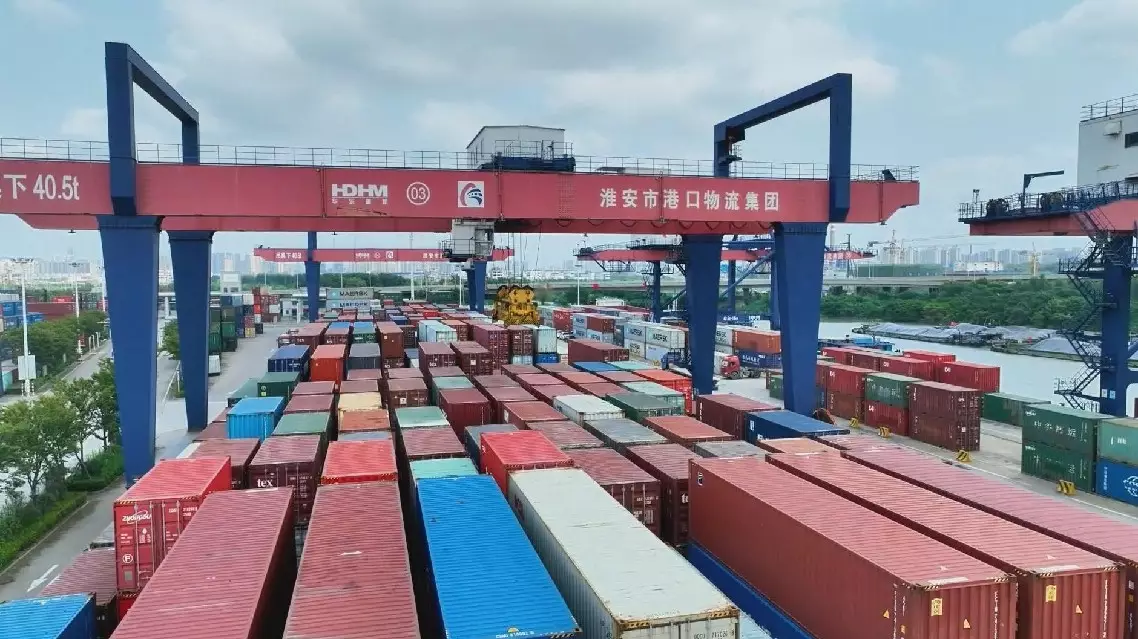Temperatures have plunged in north China as a strong cold wave continued to affect the region on Sunday, bringing snows to Beijing, Hebei and Shanxi.
Minimum temperatures in most parts of Hebei Province continued to drop by 3 to 8 degrees Celsius on Sunday. In Guyuan County of Zhangjiakou City, as the highest daytime temperature was only 2 degrees Celsius, many people went out in winter clothes.
Local authorities have activated the heating system, and kept adjusting the operating parameters according to the outdoor temperature changes.
The Hebei meteorological observatory has predicted snow in cities including Zhangjiakou, Chengde and Baoding in the day, while temperatures are expected to drop to below minus 2 degrees Celsius.
On the same day, the Beijing Meteorological Service said that snow had fallen in the mountains of Yanqing, a suburb of Beijing. But it also said that the day would not be defined as Beijing's first snow day of the year because most other observation stations in the city had not yet recorded snow.
Historically, the earliest snow day in Beijing is Oct 31, and the average first snow day is Dec 3.
A wide range of rain and snow also hit Shanxi Province on Sunday, affecting traffic on some expressways. In consideration of safety concerns, some sections of several expressways have banned passenger cars with more than seven seats and dangerous chemical vehicles from entering.
In order to ensure the orderly passage of highways, local traffic police have intensified patrol of key sections and strengthened road direction to remind drivers to slow down.
Shanxi provincial meteorological department has forecast that the northern part of Shanxi will still see sleet or light snow on Monday, while some areas will even experience heavy snow.

Temperatures plunge in north China as strong cold wave continues

Temperatures plunge in north China as strong cold wave continues
The Chinese government issued an action plan on Wednesday to reduce logistics costs and boost economic efficiency, with the goal of lowering the ratio of social logistics costs to GDP to around 13.5 percent by 2027.
By 2027, the country expects to further optimize the structure of goods transport, and strengthen the national logistics hub system and modern logistics service network, said the plan issued by the general offices of the Communist Party of China Central Committee and the State Council.
China will further optimize its national cargo transport system, with the goal of raising the share of railway freight volume and railway freight turnover to about 11 percent and 23 percent, respectively, by 2027. Port container transport via rail and water is also expected to maintain strong growth.
"The ratio of total social logistics costs to GDP reflects both the cost efficiency of the logistics sector and the organizational quality of the industrial and supply chains. In 2023, this ratio in China was 14.4 percent. Based on China's 2023 GDP, a 0.9 percentage point decrease from 14.4 percent to 13.5 percent would cut total logistics costs by over one trillion yuan (about 138 billion U.S. dollars), generating significant corporate profits," said Lu Chengyun, deputy director of the logistics department at the Integrated Transport Research Institute of the National Development and Reform Commission.
To effectively improve logistics efficiency and cut costs, many logistics hub cities across China are introducing new initiatives, focusing on areas such as improving multimodal transport systems, establishing direct freight train services, and ensuring the open sharing and connectivity of logistics data across different platforms.
Huai'an City in east China's Jiangsu Province is home to the province's largest inland river port. This year, Huai'an Port partnered with leading global shipping companies to link domestic inland river routes with international ocean shipping lines, creating a more efficient and convenient logistics channel for import and export businesses.
"In the past, goods from inland areas were usually transported by road first and then shipped by sea. Now, the process begins with inland river transport, followed seamlessly by sea transport, which reduces the time and procedures for goods transport, cutting the average logistics cost per container by nearly 50 percent. Besides, integration and facilitation measures for customs clearance, such as direct cargo pick-up at the ship, immediate loading upon arrival at ports, and the same vessel for both domestic and international shipments, have all contributed to reducing transport time," said Yang Shan, a foreign trade staff member from a Huai'an-based shipping company.
Starting in 2024, the Hunan-Guangdong-Africa rail-sea intermodal train service, featuring shorter transport time, more stable operations, and lower costs, has begun operating on a weekly schedule. Freight trains carrying products such as new energy vehicles and machinery parts depart from Zhuzhou City in central China's Hunan Province, heading directly to Nansha Port in Guangdong Province in the south where the goods are prepared for export to Africa.
"Previously, our Hunan-Guangdong-Africa rail-sea intermodal train service didn't have a direct route. Now, with the new service, the transport time from Zhuzhou to Guangzhou has been cut from 72 hours to just 20 hours. We are also continuously optimizing rail freight costs, and through resource integration, we have reduced logistics costs by about 2,500 yuan (about 345 U.S. dollars) per container," said Zhang Jian, chairman of a Zhuzhou-based logistics company.
In Zibo City of east China's Shandong Province, real-time logistics data of bulk commodities is monitored and analyzed on trading platforms. Such platforms can monitor the status of cargo trucks throughout the entire process, from loading and transport to unloading, enabling more efficient logistics planning and cost savings.

China issues action plan to cut national logistics costs











